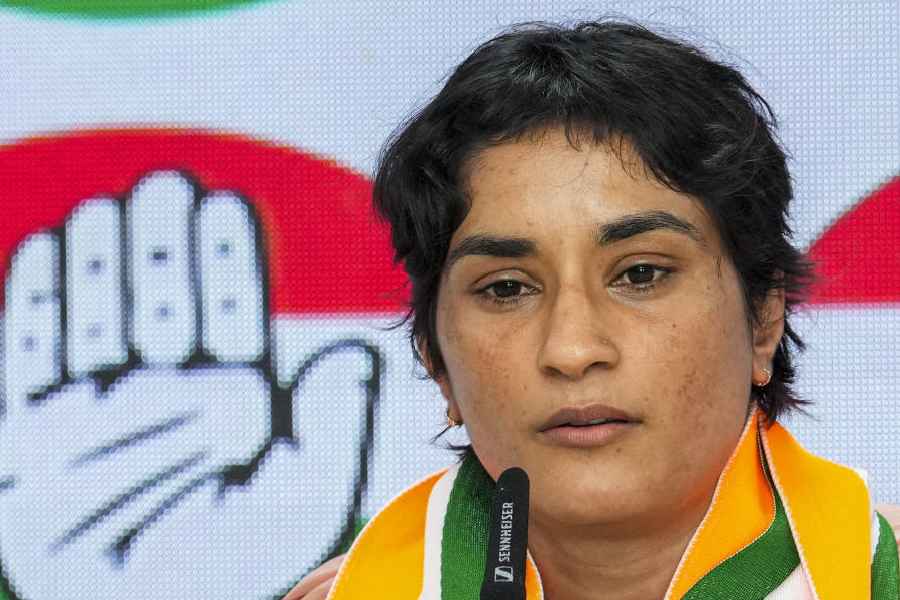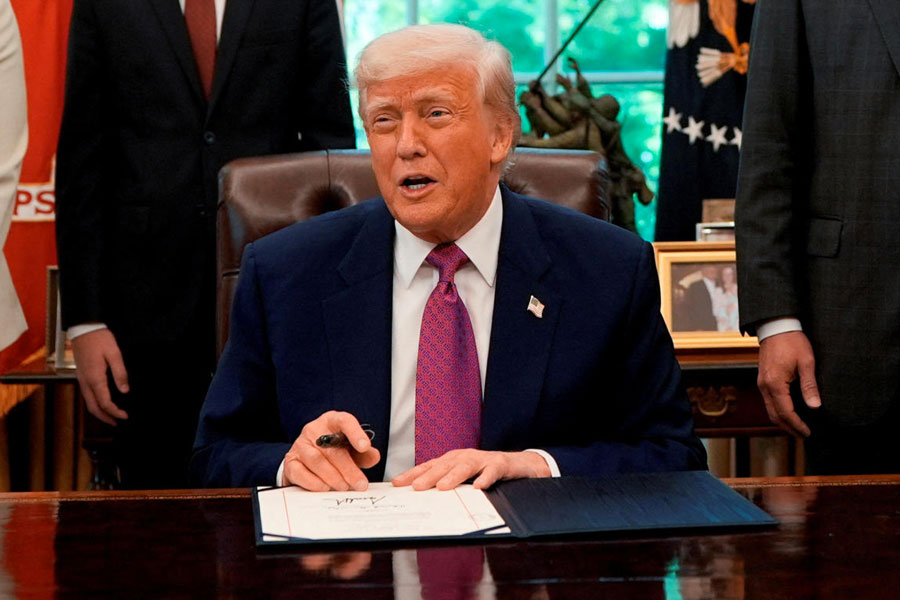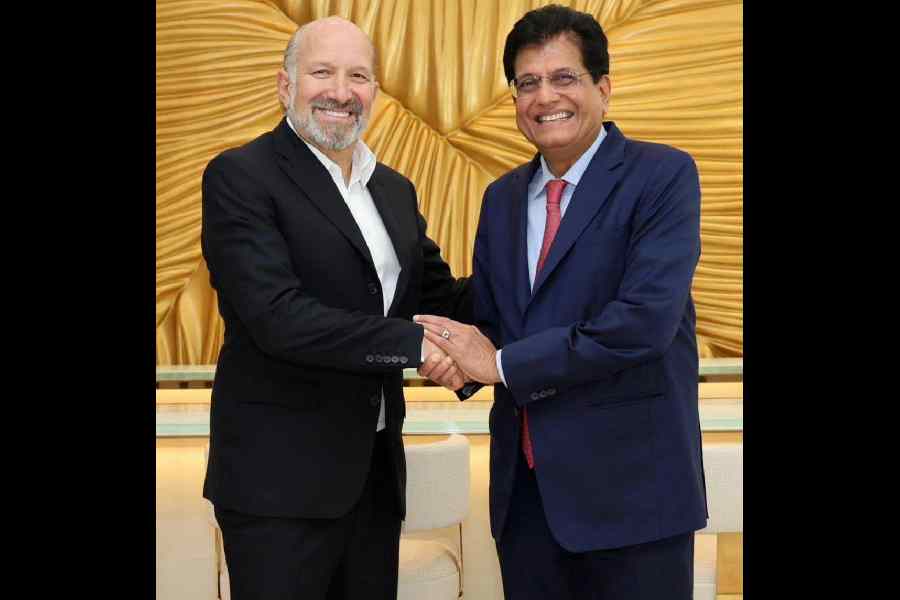 |
It’s not an auspicious start to an interview. “I don’t read anything about myself,” Sam Pitroda is telling a visitor who’s just shown him a newspaper article on him at his Yojana Bhavan office. “I haven’t done so for 25 years.”
Journalists, he explains, shooting a quick glance at me, interpret what he says in their own way. “I will read it and say this is not what I meant. It’s pointless. So I just don’t read.” At the most, he checks out his photograph.
The trademark shoulder length hair has gone white and is thinning. The goatee is dyed black. He’s a tad wiser now about the way the system works in India than he was in the 1980s, when he was the America-returned telecom messiah and then Prime Minister Rajiv Gandhi’s favourite (and controversial) technocrat. But Satyanarayan Gangaram Pitroda, inventor, entrepreneur, public speaker, is still doing what he likes best — heading committees, advising the Prime Minister, overseeing projects and shuttling between the United States and India.
Pitroda is currently chairman of the National Innovation Council (NIC) and adviser to the Prime Minister on public information infrastructure. The NIC is meant to give innovation a leg-up. “No matter what we do on innovation today, it’s not enough.” The public information infrastructure project, to put it very simplistically, will put all public data and information on a single platform that can be accessed with the help of information technology.
Since 2004, he has helmed five committees and task forces (often concurrently) on issues ranging from education (the National Knowledge Commission), restructuring the Bharat Sanchar Nigam Ltd and the use of IT in railways, power and health. Trinamul Congress head Mamata Banerjee wants him to work on a plan to give Calcutta a facelift. And he’s on the United Nations Broadband Commission for Digital Development, meant to promote broadband-friendly policies.
That’s a lot for a 68-year-old who’s had two quadruple bypass operations and been through prostate cancer. “I’m all cut up from here,” he says, pointing to his neck, “down to here,” raising his trouser cuff to show a scar just above his ankle.
“India needs multiple bypasses,” says the man who, in his heyday in the 1980s, not only modernised Indian telecommunications but was also in charge of Rajiv Gandhi’s six technology missions — on drinking water, immunisation, literacy, dairy development, oilseeds and telecom.
He wonders why there’s excitement about 9 per cent economic growth when health and education are in a mess. “It’s not about creating more billionaires, it’s about lifting millions.” What India is neglecting, he says, is building institutions. “We have nineteenth century mindsets, twentieth century processes (a legacy of the British Raj) and twenty-first century needs.”
The India he has returned to after nearly two decades is, he admits, more receptive to change. Back in the 1980s, he faced huge resistance from the telecom bureaucracy to his plans for indigenous production of digital switches for telephone exchanges. “It was a new idea, that telecom could change India, that indigenous development was possible and could produce a digital switch for Rs 36 crore.” Vested interests — telecom multinationals pushing their technology, which was much costlier — were also at work. “If I had believed that everybody would agree with me, it would have been naïve on my part. But that was part of the challenge driving us — that it has never been done, nobody believes in you, you’ve got to make it happen.”
He was, he accepts, ignorant about Indian government culture, but feels this was his strength. “If I had known everything about India and how systems work, I would never have tried telecom.”
Resistance, he concedes, is inevitable. “If you are concerned about resistance to change, don’t promote change. You can’t be a change agent and be afraid. That’s part of the package, naa.”
It’s not a bad comeback for a man who left India in the mid-1990s on a not-very-happy note. “Not at all. I had the best time of my life in India. Even if you give somebody $10,000, you can’t get a job like that,” he says. He returned to the United States to put his personal life in order. “I had worked for 11 years in India without a salary. I didn’t have money to put my children through college.” Son Salil is now an investment banker in New York and daughter Rajal is marketing films in Hollywood.
Pitroda, the third of eight children of a poor Gujarati carpenter who had moved to Titlagarh in Orissa, had met Rajiv Gandhi when the latter had just stepped into politics. The man who had never used a telephone till he went to the United States on a scholarship as a 20-something had become a hugely successful telecom inventor-entrepreneur by his late 30s (he holds over 100 patents, including for the digital diary). In the early 1980s, he heard about then Prime Minister Indira Gandhi setting up a committee to study the modernisation of Indian telecommunications. He flew to India and made a presentation to the committee. At another presentation to her, he met Rajiv Gandhi. They forged a bond that lasted till the latter’s death in 1991.
In August 1984, the Centre for the Development of Telematics (C-DoT) was set up and Pitroda and his team got to work on developing products based on digital switches — main automatic exchange, private automatic branch exchange (PABX), rural automatic exchange and trunk automatic exchange. And then Rajiv Gandhi put him in charge of the technology missions. Suddenly Pitroda was everywhere.
Things changed after Rajiv Gandhi lost power and was later assassinated. Pitroda had run-ins with the telecom minister in the V.P. Singh government, K.P. Unnikrishnan, who set up a committee that rubbished many of C-DoT’s achievements. There were charges of corruption and questions were raised about his citizenship (he gave up his American citizenship in 1987); he calls both allegations bogus. He was effectively sidelined by Singh and later P.V. Narasimha Rao. He had raised the hackles of the Congress old guard by scripting a plan to rejuvenate the party, while Rajiv Gandhi was alive, and had few sympathisers in the party. A massive heart attack finally brought things to a head and he decided to return to the United States, though he continued to head the technology missions till 1997 when he formally resigned. He went back to patenting inventions, headed WorldTel (an International Telecommunication Union initiative), became active on the lecture circuit, and later set up C-Sam, a company that attempts to facilitate financial transactions through mobile technology.
That’s the subject of his latest book, The March of Mobile Money, co-written with C-Sam CEO Mehul Desai. His invention — a digital wallet stored in a cellphone — is not only a fancy indulgence for the rich but can be a powerful tool for giving the poor access to financial services. That’s ironic coming from a man who had once opposed the introduction of car phones (also based on mobile telephony) in India, calling them obscene. That statement, he says, was twisted out of context. Car phones in the 1980s, he elaborates, cost Rs 2 lakh, and had to be imported, something India, with its scarce foreign exchange reserves, could hardly afford. “I said if I had Rs 2 lakh I would rather buy parts for my rural exchange. Not give some politician or bureaucrat or rich man a phone in his car.”
His engagement with India resumed in 2004, when he got involved with the Congress election campaign, and was appointed head of the Knowledge Commission when the party came to power. He’s grateful that Prime Minister Manmohan Singh has given him “carte blanche to do whatever I think is right to do”. So is he going to shake things up all over again? “I have always believed that disruption is positive. Every disturbance creates a new order.”
His involvement in many things at the same time have attracted the charges that he is power hungry and that he doesn’t have the ability to concentrate on one thing and make it a success. For example, C-DoT, which promised to deliver its bouquet of switches in 36 months, was behind schedule. Telecom was a success, he rebuts, though he admits C-DoT did not continue as an innovating institution after a decade or so. The technology missions were also successful, he claims, dismissing criticisms that they were not, as the typical Indian obsession with half-empty glasses. “There is a difference between doing the right thing and doing things right. I want to focus on doing the right things at this age. Young people will figure out how to do it right.”
One of the things he doesn’t do right, his detractors say, is to be obsessed with solutions to problems based on technology and modern management principles, ignoring social and political realities. “Because I am not qualified to worry about that, naa. How do you expect me to know all of that? Let social scientists and political scientists worry about that.”
Right now, it’s his family that’s worrying about the frenetic pace he’s keeping. “I have little time left, maybe five, maybe 10. I just have a good time. I could retire, but that would be boring, naa.”
His secretary reminds him of other appointments. “Remember, I’m not going to read what you’ve written,” he laughs as he walks me to the door.










